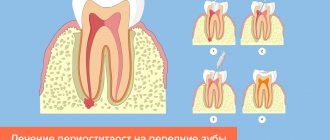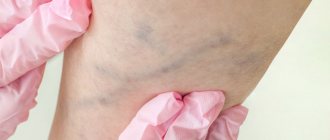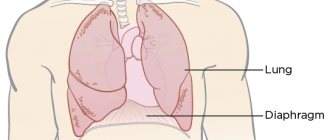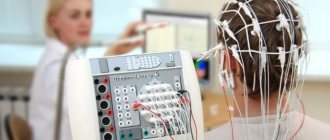With any stagnation of blood in the pelvic organs, prerequisites appear for the development of acute adnexitis. Predisposing factors are constipation and disturbances in the gastrointestinal tract. Decreased immunity increases the risk of developing the disease.
There is left-sided and right-sided adnexitis, the symptoms of which correspond to the symptoms of acute adnexitis. If symptoms of acute left-sided or right-sided adnexitis are detected, treatment with antibiotics begins immediately, depending on the pathogen. Prescribe antihistamines to relieve swelling and painkillers. Right-sided adnexitis is very often confused by its symptoms with acute appendicitis.
Acute adnexitis has four stages of development:
- Acute salpingitis and endometritis without irritation of the pelvic peritoneum.
- Acute salpingitis and endometritis with irritation of the pelvic peritoneum.
- Acute adnexitis, inflammatory conglomerate, abscess formation.
- Perforation of a tubo-ovarian abscess into the genitals, anterior abdominal wall or abdominal cavity.
Acute adnexitis develops in two phases. In the first phase (toxic) of acute adnexitis, symptoms of intoxication and aerobic microflora predominate. In the second phase (septic), symptoms of severe complications appear, anaerobic microflora joins. During this phase, a tubo-ovarian abscess develops.
With timely treatment of the acute form of the disease, the patient’s complete recovery and restoration of reproductive function are possible. The development of a purulent process reduces the chance of normal functioning of the reproductive organs; treatment is carried out through surgery.
Causes of the disease
Inflammation of the appendages is always caused by pathogenic microorganisms - staphylococcal, streptococcal, intestinal, fungal, tuberculosis infections and any STIs (sexually transmitted infections).
Infection can occur from the outside - through unprotected sexual intercourse, swimming in dirty water, careless performance of intimate hygiene procedures. In this case, we are talking about the ascending route of transmission of infection - that is, from the vagina to the internal genital organs.
The external and internal genital organs themselves are not sterile - they contain their own microflora, which may also contain opportunistic bacteria, such as staphylococcus. During normal functioning of the immune system, the body maintains a balance of microflora, when the number of “good” microorganisms exceeds the number of pathogenic ones. However, when the immune system is weakened, the pathological flora begins to multiply rapidly, causing inflammation. Various unfavorable factors can provoke a decrease in the immune response - ARVI, systemic diseases, hypothermia, stress. It’s not for nothing that people know that sitting in the cold leads to “women’s diseases.” Of course, the disease is not caused by cold, but by an immune failure caused by hypothermia.
Microbes and viruses can enter a woman’s internal genital organs from other body systems in which there is a source of infection. This could be the kidneys, bladder, tonsils, or any other organ. Microorganisms spread from the diseased organ through the circulatory and lymphatic systems, entering the fallopian tubes and causing inflammation of the woman’s internal genital organs. In this case, they talk about the downward spread of the disease.
What factors can lead to salpingoophoritis:
- Early onset of sexual activity.
- Promiscuous sexual intercourse without barrier protection.
- Failure to comply with hygiene requirements.
- Sexual life during menstruation.
- Untimely replacement of the intrauterine device. The IUD itself is a risk factor for the penetration of pathogens from the cervix into its cavity, and then into the tubes. And if the period of use of this contraceptive exceeds the established period, this can lead not only to adnexitis, but also to an abscess of the ovary and tube, and even peritonitis.
- Conditions of reduced immunity. These can be systemic diseases, oncological processes, endocrine pathologies, tuberculosis, HIV.
- Stress. Severe or prolonged stress leads to depletion of the immune system and the development of inflammation.
- Gynecological invasive interventions. Abortions, diagnostic curettages, postpartum traumatization.
- Acute and chronic bacterial and viral infections. Sore throats, pyelonephritis, ARVI (including influenza), etc.
- Hypothermia. Working in unfavorable conditions, wearing inappropriate clothing, swimming in cold water.
Symptoms and treatment of adnexitis depend on its type.
Prevention
Prevention of salpingoophoritis does not differ from that for other inflammatory diseases of the pelvic organs. In order to prevent the development of inflammation of the appendages, it is necessary to abandon casual relationships, use protection during sex, avoid abortions, and prevent the development of postpartum infections.
Women who are sexually active should avoid frequently changing sexual partners. Regular medical examinations are recommended at least every six months. This will allow you to timely diagnose diseases of the genital organs, regardless of their nature, origin, and undergo treatment.
To minimize episodes of exacerbation of the chronic form, you need to avoid physical overexertion, overwork, hypothermia, in general, everything that can weaken the body and reduce its immune defense. Here, secondary prevention of salpingoophoritis comes to the fore—prevention of complications. The patient should follow all the doctor’s recommendations very carefully. It is strongly recommended not to make changes to the therapeutic regimen on your own, to stop taking prescribed medications prematurely, or to reduce or increase the dose or frequency of administration.
If you find signs of any inflammatory gynecological disease, consult a doctor immediately. Treatment can be done at the AltraVita clinic. At the clinic, you can undergo all examinations in the shortest possible time, without wasting time on travel and long queues, because it is equipped with all the necessary diagnostic equipment. Timely treatment will allow you to achieve the fastest possible recovery, as well as avoid complications, including those from the reproductive system.
Classification of adnexitis
According to the nature of the course, salpingo-oophoritis is divided into the following types:
- Spicy. It is characterized by a pronounced clinical picture - increased temperature, pain in the lower abdomen.
- Subacute – symptoms are blurred.
- Chronic – lasts a long time, with remissions and relapses.
According to the location of the source of inflammation:
- Primary - the source of inflammation initially occurs in the appendages.
- Secondary - the inflammatory process spreads to the appendages from other pelvic organs - rectum, bladder, appendix.
According to the location of the disease. One- or two-sided - when the inflammation includes the appendages only on the right or left, or on both sides.
Symptoms of salpingoophoritis
Acute adnexitis occurs with severe symptoms:
- A significant increase in temperature - from 37.5C to 39C.
- Severe pain in the lower abdomen. It has a cutting, piercing character. As a rule, it radiates (gives) to the thigh, rectum, and sacrum. The intensity and nature of the pain does not change in any position.
- Pathological vaginal discharge. They may be green, foamy, and have an unpleasant odor. Such vaginal discharge often indicates that the causative agent of the disease is an STI. In this case, bilateral adnexitis is more often observed.
- Frequent urge to urinate or defecate.
- Pain while urinating.
- Symptoms of intoxication. Chills, weakness, apathy, nausea (maybe to the point of vomiting), headache.
The presence of acute symptoms, although quite painful, is not bad for the prognosis of the disease - a woman has a chance to immediately seek medical help and receive adequate treatment. Timely and well-treated adnexitis can go away without consequences.
Subacute course:
- Pain of moderate intensity, which intensifies with walking or physical activity.
- Low-grade fever.
- General health is satisfactory.
If a woman, in the presence of acute symptoms, self-medicates or does not complete the course prescribed by the doctor, the disease enters the chronic phase. The same can happen in subacute cases if a woman ignores ailments that seem minor and does not see a doctor for a long time. The worst thing is asymptomatic adnexitis, when a woman does not know that she is sick. Meanwhile, inflammation “smolders” in the body, leading to serious problems with reproductive health.
Symptoms of chronic inflammation of the appendages:
- Menstrual irregularities.
- Painful periods.
- Low-grade fever during exacerbation.
- Drawing, aching pain in the lower abdomen.
- Pain during sexual intercourse.
- Decreased libido.
- Characterized by a depressed mental state.
It is very important for a woman to be attentive to her health and not ignore even minor symptoms if they last a long time or occur regularly.
Where to cure inflammation of the appendages in St. Petersburg quickly and without complications, prices
Specialists at the Diana Medical Center in St. Petersburg are ready to deal with the problem at all stages - conduct all tests and ultrasound, effective conservative treatment or intervention. The European level of medical service and the most modern equipment allow us to make the treatment process effective and safe.
The cost of treating adnexitis is quite affordable: an appointment with a gynecologist - 1000 rubles, ultrasound of the appendages - 1000 rubles, taking blood for analysis - 170 rubles. The full cost of diagnosing and treating inflammation of the appendages depends on the stage and extent of the process, so contact our clinic as early as possible.
If you find an error, please select a piece of text and press Ctrl+Enter
Complications of adnexitis
Adhesive disease
The most common complication of salpingoophoritis is adhesions. About 20-30% of cases of female infertility are caused by them.
What is the mechanism of formation of adhesions?
The inflammatory process leads to the fact that the microtraumas that arise in the tissues of the ovaries and tubes begin to be covered with a filamentous protein - fibrin. It has a protective and anti-inflammatory function, but also promotes scar formation.
After a few days, fibrin threads are transformed into dense connective fibers that grow inside the organ and also “glue” neighboring organs together. Thus, their mobility is reduced and their shape is even distorted. This leads to serious disruptions to the reproductive system.
The fallopian tubes decrease in diameter and can even become fused with the ovaries. Also, as a result of adhesions and inflammation, hydrosalpinx often occurs - an accumulation of fluid in the pipes. This makes it impossible to conceive a fetus - the egg cannot enter the fallopian tube, the movement of sperm through it is difficult, and the embryo cannot enter the uterine cavity. Adhesions also provoke ectopic pregnancy and fetal death in the early stages.
The process of formation of adhesions continues for about a month after the inflammatory process has stopped. The later treatment is started, the more difficult it is for them to resolve.
Ovarian dysfunction
Prolonged inflammation leads to autoimmune reactions, when the immune system begins to fight not only with infection in the appendages, but also against the appendages themselves, mistaking their cells for foreign ones. Thus, destruction of ovarian tissue occurs and, as a result, their dysfunction.
This has the following manifestations:
- Malfunctions of the monthly cycle.
- Uterine bleeding.
- Ovarian hypofunction.
- Early menopause.
- Formation of ovarian cysts.
Purulent complications
As a result of inflammation, accumulations of pus can occur in the ovaries (ovarian abscess) and in the cavity of the fallopian tubes (pyosalpinx).
These diseases are characterized by severe conditions of the patient - high temperature, fever, acute abdominal pain. These are serious complications that threaten a woman’s life and require immediate surgical intervention.
Operations for chronic adnexitis
The chronic form of adnexitis without treatment is accompanied by suppuration. With advanced abscesses of the appendages, pills and injections will no longer help, so gynecologists recommend surgery. During intervention, the abscesses are opened and washed.
Now such operations are performed in a minimally invasive way - through laparoscopy. The essence of the technique is the possibility of performing all abdominal manipulations through several tiny holes in the anterior abdominal wall. Mini-instruments and video equipment are inserted into these punctures, making laparoscopy one of the safest surgical techniques.
Diagnostics
A gynecologist can make a preliminary diagnosis of “adnexitis” based on symptoms and a gynecological examination - pressure on the ovarian area causes pain in a woman.
To accurately establish a diagnosis, the following studies are prescribed:
- General clinical blood test. During the inflammatory process, ESR and leukocyte levels increase.
- Ultrasound of the pelvic organs. The diagnostic criterion is the presence of fluid in the pelvic area and inside the fallopian tubes, blurred contour of the ovary, cysts, signs of adhesions, and pain in the patient when the ultrasound technician uses the sensor.
- Microbiological analysis of vaginal discharge to determine the causative agent of the disease.
Additionally, other methods can be used - laparoscopy, bacterial culture, thermometry.
Treatment
Therapy for adnexitis depends on the form of the disease. But this is always an integrated approach aimed at eliminating the infection, restoring the patient’s immunity, and preventing or treating adhesions.
Antibacterial therapy is mandatory - macrolides, cephalosporins, penicillins.
In the acute period, two or more drugs may be prescribed. First, they are used intramuscularly or intravenously, and then switch to tablet administration.
It is advisable that drugs be prescribed based on the results of microflora cultures and testing the sensitivity of the pathogen to antibiotics.
The following drugs are also prescribed:
- Vitamin complexes to strengthen the immune system.
- Nonsteroidal anti-inflammatory drugs.
- Immunomodulatory.
- Antiallergic to relieve swelling.
Suppositories and creams with antibacterial and antimicrobial effects are prescribed locally.
Drugs that inhibit the growth of fungi must be used.
Adhesions are treated at an early stage of their formation with absorbable drugs, as well as with the help of specific enzymes that break down pathological fibrous tissue.
After the acute phase is removed and it transitions to subacute, physiotherapy procedures are carefully added - magnet, UHF, electrophoresis, ultrasound.
Attention! During the acute period, thermal procedures are strictly contraindicated, as they can lead to the development of purulent processes. Therefore, folk recipes such as “sitting in a hot herbal decoction” can be life-threatening.
Acute adnexitis requires hospitalization. When treating exacerbations of chronic adnexitis or its subacute course, you can get by with day hospital or outpatient treatment.
For chronic adnexitis, antibiotics are also prescribed. Physiotherapy and immunocorrective regimens are more widely used. During the period of remission, mud and baths give good results.
Surgery is a last resort for adnexitis. It is used for ovarian abscesses and pyosalpinxes. Also to restore reproductive function in case of adhesive disease.
Therapy
Treatment of acute salpingoophoritis or during exacerbations is carried out in a specialized hospital. Therapy includes the prescription of antibacterial drugs, which is carried out taking into account the sensitivity of the flora to them and the type of causative agent of the disease. Simultaneously with antibacterial therapy, detoxification therapy is prescribed, during which special anti-inflammatory suppositories are used, which reduce temperature, relieve inflammation and have an analgesic effect on the affected pelvic organs.
After the inflammatory process is relieved, the patient is prescribed absorbable medications and physiotherapeutic procedures. They will prevent the appearance of adhesions in the fallopian tubes, reducing the risk of infertility and ectopic pregnancy in the future.
If conservative treatment does not produce results, then surgery is indicated, usually laparoscopy. The scope of the operation is determined individually. If an abscess forms, the fallopian tube is removed as a source of infection. To restore the patency of the appendages, adhesions are cut and rough scars are removed.
Chronic salpingoophoritis during periods of exacerbation is treated similarly to acute. During the remission phase, the use of physiotherapy is indicated. The appropriateness of prescribing a particular technique is determined by the attending physician, depending on the severity of menstrual irregularities, the presence of adhesions, and the symptoms of the disease. Treatment includes techniques such as ultrasound, magnetic fields, pulsed currents, reflexology, mineral waters, mud in the form of applications, irrigations, baths. These procedures have a beneficial effect on general and local immunity, improve blood supply to the pelvic organs, enhance regenerative processes, and restore hormonal balance.
Patients with inflammation of the appendages are not recommended to visit hot countries with a humid climate; it is better to give preference to balneological hospitals and local sanatoriums. If the pathology causes infertility, an IVF procedure is indicated. This technique allows you to give birth to a child even for those women who have a history of hormonal or tubal infertility. Pregnancy after IVF usually proceeds normally. Hormonal support is rarely necessary to prevent spontaneous miscarriage.










